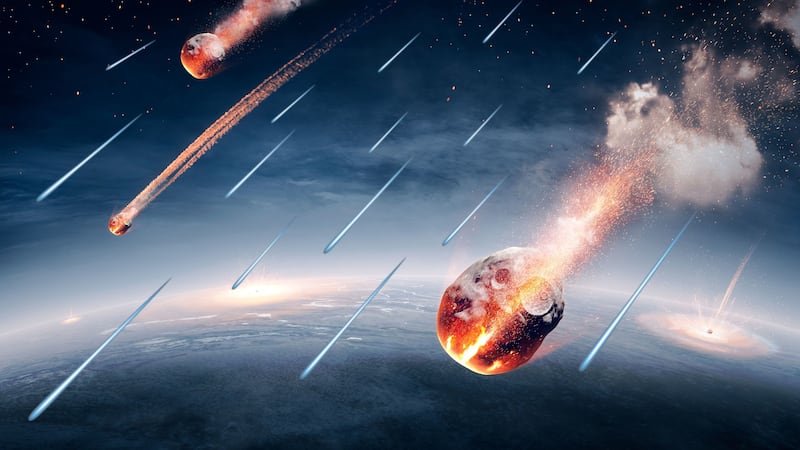Researchers may have solved a mystery about the origins of Earth’s water, finding the Sun to be a surprising source.
The scientists describe how new analysis of an ancient asteroid suggests extra-terrestrial dust grains carried water to Earth as the planet formed.
According to the study, the water in the dust was produced by “space weathering”.
Researchers found the solar wind, made up of charged particles from the Sun, created water on the surface of dust grains carried on asteroids that smashed into the Earth during the early days of the Solar System.
They suggest the finding could answer the long-standing question of where the unusually water-rich Earth got the oceans which cover 70% of its surface.
It could also help future space missions find sources of water on airless worlds.

The University of Glasgow-led team used a process called atom probe tomography to scrutinise samples from a different type of space rock known as an S-type asteroid, which orbit closer to the Sun than C-types asteroids – one type of water-carrying space rock.
The samples they analysed came from an asteroid called Itokawa, which were collected by the Japanese space probe Hayabusa and returned to Earth in 2010.
Lead author Dr Luke Daly, of the University of Glasgow’s School of Geographical and Earth Sciences, said: “The solar winds are streams of mostly hydrogen and helium ions which flow constantly from the Sun out into space.
“When those hydrogen ions hit an airless surface like an asteroid or a spaceborne dust particle, they penetrate a few tens of nanometres below the surface, where they can affect the chemical composition of the rock.
“Over time, the ‘space weathering’ effect of the hydrogen ions can eject enough oxygen atoms from materials in the rock to create H2O – water – trapped within minerals on the asteroid.
“Crucially, this solar wind-derived water produced by the early solar system is isotopically light.
“That strongly suggests that fine-grained dust, buffeted by the solar wind and drawn into the forming Earth billions of years ago, could be the source of the missing reservoir of the planet’s water.”
The researchers’ estimates of how much water might be contained in space-weathered surfaces also suggest a way future space explorers could manufacture supplies of water on even the most seemingly arid planets.
Co-author Professor Hope Ishii of the University of Hawai’i at Manoa said: “One of the problems of future human space exploration is how astronauts will find enough water to keep them alive and accomplish their tasks without carrying it with them on their journey.
“We think it’s reasonable to assume that the same space weathering process which created the water on Itokawa will have occurred to one degree or another on many airless worlds like the Moon or the asteroid Vesta.
“That could mean that space explorers may well be able to process fresh supplies of water straight from the dust on the planet’s surface.
“It’s exciting to think that the processes which formed the planets could help to support human life as we reach out beyond Earth.”
The study is published in Nature Astronomy.
Researchers from the University of Glasgow, Curtin University, the University of Sydney, the University of Oxford, the University of Hawai‘i at Manoa, the Natural History Museum, Idha National Laboratory, Lockheed Martin, Sandia National Laboratories, Nasa Johnson Space Centre, the University of Virginia, Northern Arizona University and Purdue University all contributed to the paper.








